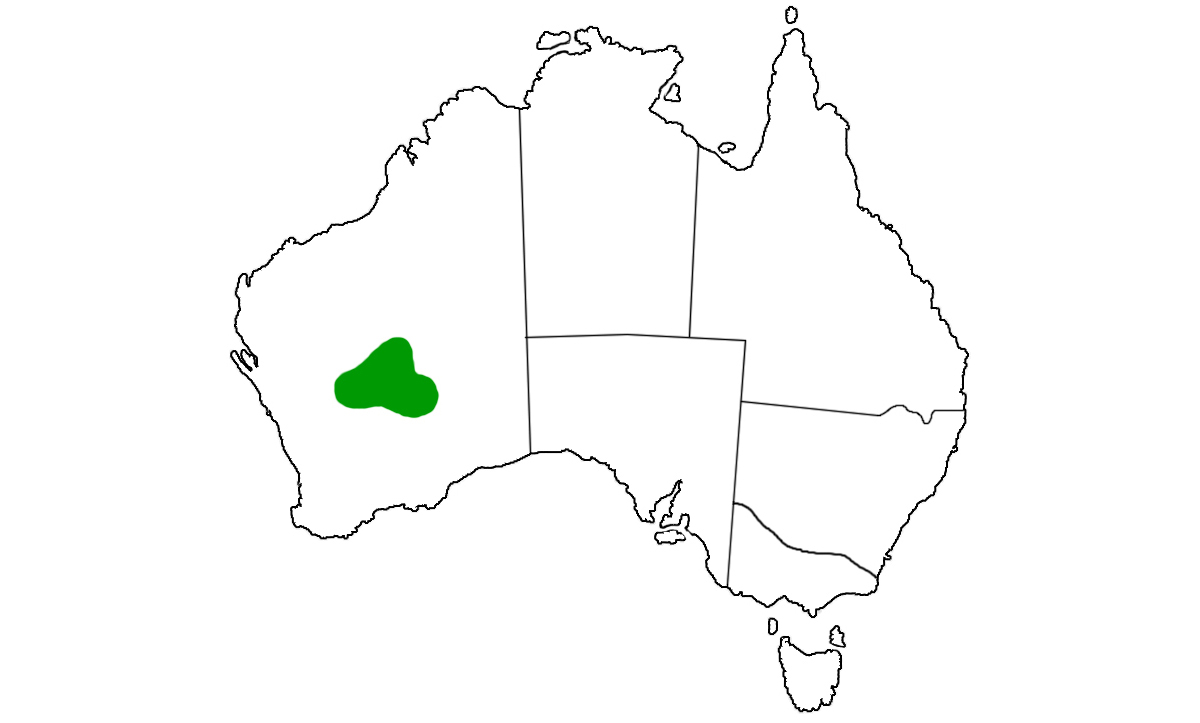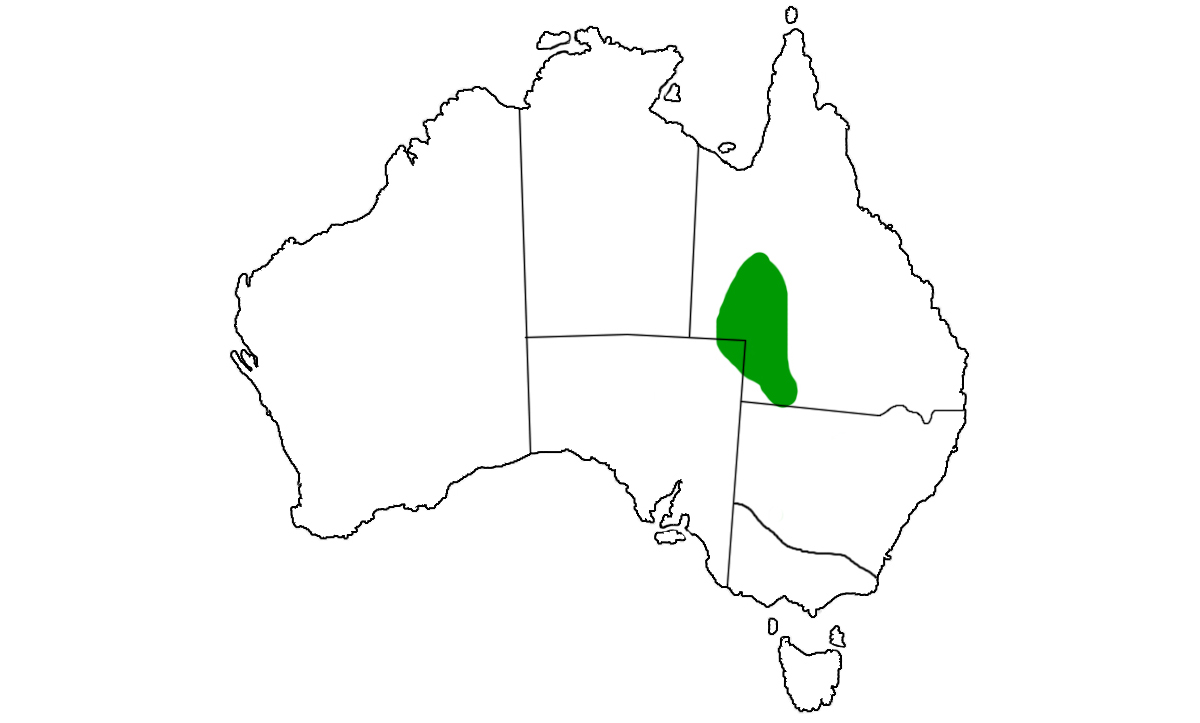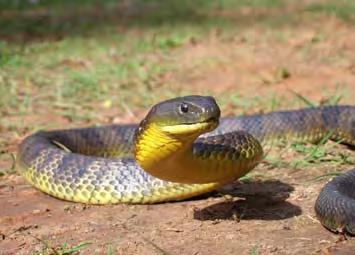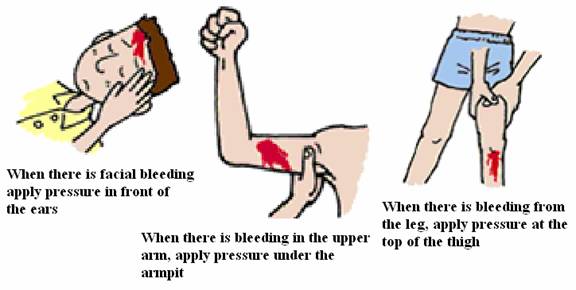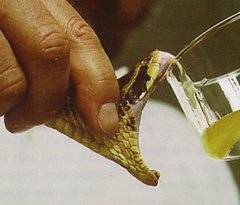Venomous Snakes: Steer Clear
/Most Top End's venomous snakes are not considered deadly. by Graeme Gow
The northern half of Australia is home to many species whose bite requires medical treatment - so it is wise to steer clear.
Venomous Snakes Profile: Secretive Snake: Cryptophis pallideceps
 Description: Head slightly distinct from neck, moderately slender body. Dorsal coloration is blackish, often with a paler head. The ventral surface can be creamish to pink.
Description: Head slightly distinct from neck, moderately slender body. Dorsal coloration is blackish, often with a paler head. The ventral surface can be creamish to pink.
Its maximum length is about 630 mm. It is found in the Top End of the Northern Territory.
Remarks: The secretive snake is a nocturnal species that shelters beneath rocks, logs, and other debris. It is probably a live-bearer. It mainly feeds on small lizards but will occasionally take frogs. It is not considered dangerous to humans, but a bite from a large specimen may require medical treatment.
Venomous Snakes Profile: Little Spotted Snake: Denisonia punctata
 Description: Head depressed, slightly distinct from neck, moderately slender body. Dorsal coloration is light to reddish brown, often with a darker spot on each scale. The head and neck have prominent dark blotches. Ventral surface is white or creamish.
Description: Head depressed, slightly distinct from neck, moderately slender body. Dorsal coloration is light to reddish brown, often with a darker spot on each scale. The head and neck have prominent dark blotches. Ventral surface is white or creamish.
Maximum length is about 520 mm.
It is found in Northern Australia, with the exception of eastern Queensland.
Remarks: The little spotted snake is a nocturnal species usually associated with red desert areas. It is a live-bearer. One litter of five has been recorded.
It preys mainly on small lizards, but has also been recorded feeding on blind snakes.
Although it is not considered dangerous, its bite can be painful.
Venomous Snakes Profile: Black Whip Snake: Demansia atra
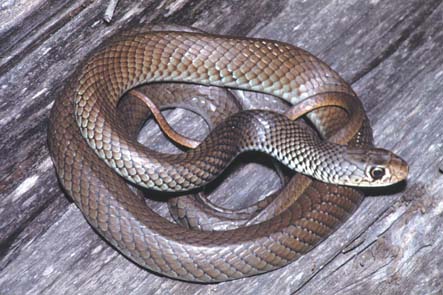 Description: Head deep and narrow, distinct from the neck, long slender body. Dorsal coloration is black, becoming reddish. The head is dark coppery brown. Dark posterior blotching may be present. The lips, chin, throat and undertail can be pinkish to whitish.
Description: Head deep and narrow, distinct from the neck, long slender body. Dorsal coloration is black, becoming reddish. The head is dark coppery brown. Dark posterior blotching may be present. The lips, chin, throat and undertail can be pinkish to whitish.
The maximum length is 1.8 mm.
It is found on the coast and adjacent areas of northern Australia, from the East Kimberleys Western Australia through the top end of the Northern Territory to central eastern Queensland. It is also found in Papua New Guinea.
Remarks: The black whip snake is an active diurnal species, which is occasionally semi-nocturnal on warm nights. Considered to be Australia's fastest moving snake, it is nervous and retiring. It will not bite unless provoked. It is an egg layer and may produce up to 20 eggs in clutch. It feed on small reptiles, frogs, mammals and insects. Although the exact potency of its venom is unknown, bites from large specimen are regarded as potentially dangerous to man.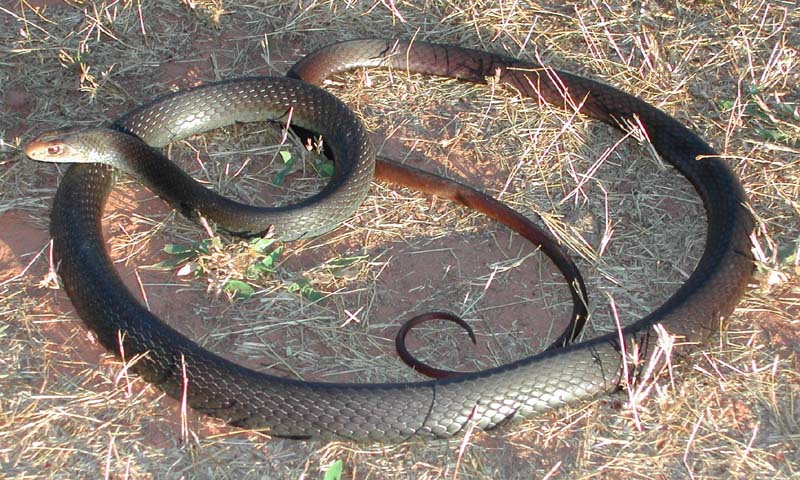
Venomous Snakes Profile: Demansia papuensis:
This species, which is similar to the black whip snake, may be distinguished by its higher ventral and subcaudal scale counts, spotted head and its anterior ventrals not being black edged.
Venomous Snakes Profile: Yellow-face Whip Snake: Demansia Psammophis reticulata
Description: Head barely distinct from neck, elongate body. Dorsal coloration is greenish grey merging to coppery brown. Each body scale has prominent black edging, giving a distinctive reticulated appearance. The head is olive green or coppery brown, with a pale edged dark line running from the rostral to the eyes, where it meets a pale-edged, narrow comma-shaped marking surrounding the eye. The throat is yellow and the remainder of the ventral surface is yellowish white.
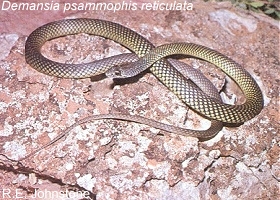 Its maximum length is about 900 mm.
Its maximum length is about 900 mm.
It is found in all of Western Australia, apart from the far south and far north, southern Northern Territory and northern South Australia.
Remarks: The yellow-face whip snake is a fast moving, diurnal species which feeds on small reptiles and frogs. It is an egg layer, but there are no records of clutch size. Although it is venomous, it is not regarded as dangerous to man.
Venomous Snakes Profile: Curl or Myall Snake: Suta suta
Description: Depressed head distinct from neck, robust body. Dorsal coloration may be any shade of brown, occasionally olive green, often with dark tips on the scales, giving a reticulated appearance. The head and nape are dark brown to black. A dark line extends from below the eyes to the snout. This line is bordered by white scales. These marking are barely discernible or completely absent in aged specimens. The under-surface is white or cream.
Its maximum length is about 900 mm.
 It is found in most of South Australia, New South Wales, Queensland and the Northern Territory, extending into eastern Western Australia. It is also found in the north-west corner of Victoria.
It is found in most of South Australia, New South Wales, Queensland and the Northern Territory, extending into eastern Western Australia. It is also found in the north-west corner of Victoria.
Remarks: This nocturnal, terrestrial species ranges through a variety of habitats, but is most common in dry arid areas. It shelters in earth cracks or under logs and other ground debris. It is a live bearer and may produce about six in a litter.
These venomous snakes feed on lizards, frogs, and small mammals. Of unpredictable nature, this snake derives its vernacular name from its threat display, which consists of flattening the body, curling tightly, then lashing from side to side. Although it was not previously regarded as dangerous, the toxicity of its mainly neurotoxic venom is not fully known and bites from large specimens may require medical treatment.
Australia to the venomous snakes
While Australia is home to some of the most fascinating and unique creatures in the world, its beautiful settings also attracts some of the world's most venomous snakes.





